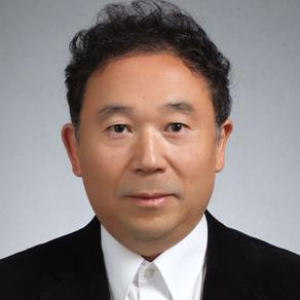Title : Materials design of wide-band gap oxide semiconductors
Abstract:
Metal oxides are a group of materials that fulfill a wide variety of application properties or encourage evolution or development of near-future applications. The applications, for example, include as follows: (1) power electronics such as high Ga2O3-based high-electron-mobility transistors (HEMTs) and Field-effect transistors (FETs) and optoelectronics such as vacuum ultraviolet (VUV) light emitter and deep ultraviolet (DUV) light emitting diodes (LEDs) ; (2) transparent conductive electrodes for use in touch screen, LCD-TV, organic LED and photovoltaic solar cells; (3) Radiation resistant materials for space industry; (4) biological and medical applications such as antibacterial agents.
We have been developing a technology which enables high film-deposition-rate such as 170 nm/min, low temperature of less than 250 ºC and low-substrate-damage growth of thin films to tailor electrical, optical and mechanical properties of highly transparent conductive oxide (TCO) films. The TCO films are based from n-type doped ZnO- and In2O3-based films. We have been choosing several types of dopants suitable for achieving oxide films that meet the properties and functionals specific applications require. For achieving reliable solid devices, the use of dopants that have high oxygen affinity compared with host metal atoms is essential. For example, for In2O3 films, W and Ce atoms have advantages over the conventional Sn atoms. This will suppress the generation of oxygen vacancies in the vicinity of the substitutional-type dopant sites. On the other hand, note that ionic radii of dopant metal atoms which strongly depend on their charge states and on the coordination numbers play a critical role in controlling the residual strain in doped films. Recently, we reported Ce- and H-codoped In2O3 films (ICO:H) with a thickness of 100 nm showing high Hall mobility of 145 cm2/(Vs). Incorporating ICO:H-based electrodes instead of Sn-doped In2O3-based electrodes improved the performance of Si heterojunction solar cells.[2] In addition, we achieve that 5-nm- and 30-nm-thick W-doped In2O3 films show Hall mobility of 57.7 and 97.4 cm2/(Vs), respectively.
Concerning ZnO films that have advantage of high optical visible transparency over In2O3 films, Al and Ga atoms having high O affinity as substitutional-type dopants have been reported. In previous work, we succeeded in the fabrication of liquid crystal displays with Ga-doped ZnO-based (GZO) electrodes produced with the conventional production lines. It is easy to realize high carrier concentration GZO films exhibiting heat resistance. Note that Ti-doped ZnO films show excellent performance of the heat resistance. We discuss how to choose the dopants meeting application requirements from theoretical and experimental viewpoints.
Audience take away:
- The audience will be able to choose donor dopants that cause stable and reliable solid state devices utilizing oxide semiconductors.
- The audience will understand why doping of the above dopants leads to high carrier transport.
- The audience will learn and gain a new look at oxide semiconductors.
- The audience will study a film-deposition method that enables us with low-damage to substrate and film, and low temperature deposition with very fast deposition rates on substrates with a large size.



